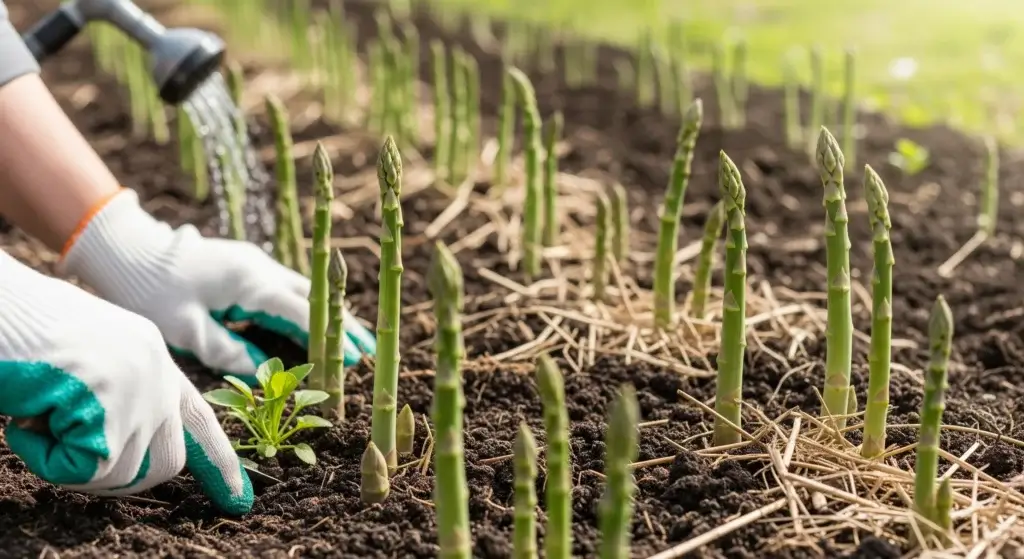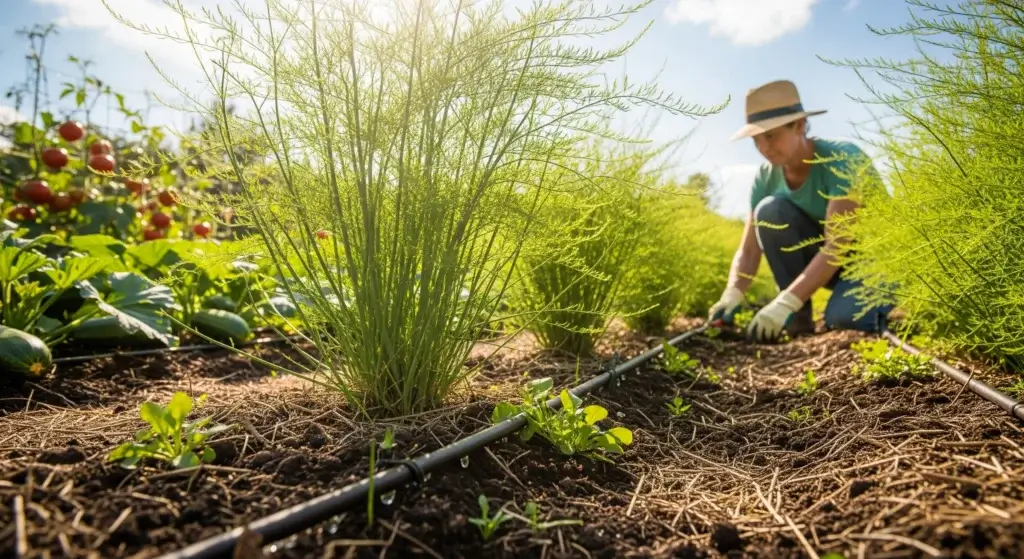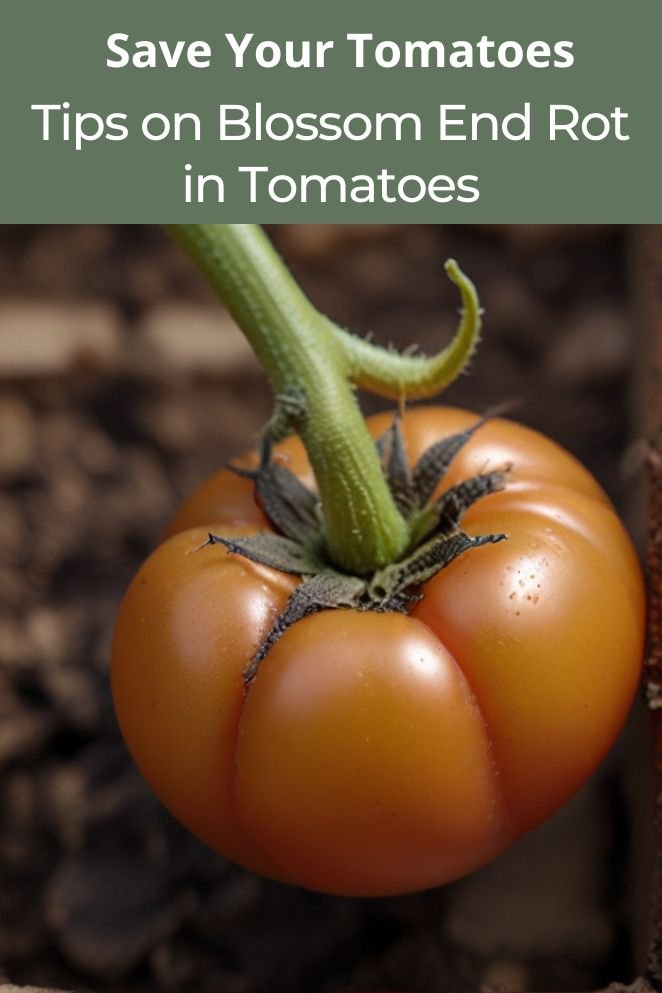
As a gardener, there’s nothing more frustrating than watching your tomato plants struggle with blossom end rot, a common issue that can devastate your crop.
Blossom end rot is a condition that affects tomato fruits, causing them to develop a soft, watery, and often sunken area on the blossom end.
It’s a frustrating problem that can be caused by a variety of factors, but the good news is that it’s preventable and treatable.
In this article, we’ll delve into the causes of blossom end rot, provide tips on how to prevent it, and offer advice on how to deal with affected tomatoes.
What is Blossom End Rot?
Blossom end rot is a common problem affecting tomato fruits, occurring in both home gardens and commercial production.
This physiological disorder results in the development of a soft, watery, and often sunken area on the blossom end of the fruit.
Typically, affected tomatoes display a brown or black spot on their underside, accompanied by a soft, mushy texture.
This condition can impact the overall quality and yield of tomato crops, making it important for growers to address and manage appropriately.
- Read also: Troubleshooting Tomato Leaf Problems
- Read also: Troubleshooting Tomato Stem Problems
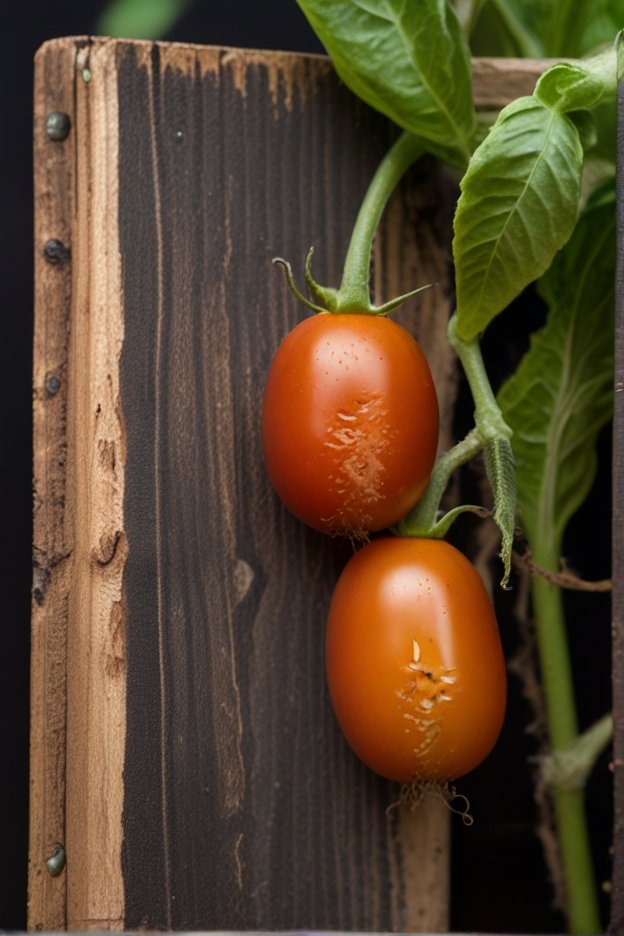
What Causes Blossom End Rot?
Blossom end rot arises from a combination of factors, each contributing to the development of this troublesome condition:
Inconsistent watering
Inadequate or erratic watering practices rank among the primary culprits behind blossom end rot.
When tomato plants don’t receive a steady and sufficient water supply, they undergo stress.
This stress disrupts the plant’s calcium uptake, leading to a calcium imbalance within the fruit.
Consequently, the affected tomatoes develop a soft, watery area on their blossom end, indicative of blossom end rot.
High salt content in soil
Another factor contributing to blossom end rot is the presence of elevated salt levels in the soil.
Tomatoes are notably sensitive to excessive salt, which interferes with their ability to absorb crucial nutrients like calcium.
As a result, the plants struggle to maintain proper calcium levels within the fruit, predisposing them to the development of blossom end rot.
Rapid fruit growth
The rapid expansion of tomato fruits can also exacerbate the risk of blossom end rot.
When tomatoes undergo rapid growth, they may outpace the plant’s ability to supply calcium and other essential nutrients to the developing fruit.
This imbalance leads to a buildup of calcium within the fruit, resulting in the characteristic soft, watery area on the blossom end associated with blossom end rot.

How to Prevent Blossom End Rot?
Preventing blossom end rot is crucial to maintaining a healthy and productive tomato crop.
Here are some tips to help you prevent this condition:
Watering
Consistent and adequate watering is crucial for preventing blossom end rot.
Tomatoes typically require around 1-2 inches of water per week, either from rainfall or irrigation.
It’s important to water deeply and evenly to ensure that the entire root zone receives moisture.
However, be cautious not to overwater, as excessive moisture can leach calcium from the soil, exacerbating the condition.
Using drip irrigation or soaker hoses can help deliver water directly to the roots while minimizing water waste and soil splashing, which can spread diseases.
Soil health
Maintaining optimal soil health is fundamental in preventing blossom end rot.
Start by testing your soil pH, aiming for a slightly acidic pH level, which is ideal for tomato plants.
If necessary, adjust the pH by adding lime to raise it or sulfur to lower it.
Additionally, ensure that your soil has good drainage to prevent waterlogging, which can impair calcium uptake by the roots.
Amending the soil with organic matter, such as compost, can improve soil structure and fertility.
Planting techniques
Proper spacing and planting techniques can help reduce the risk of blossom end rot.
Avoid overcrowding tomato plants, as this can lead to competition for nutrients and water, as well as increased humidity levels, which promote disease development.
Plant tomatoes at the recommended spacing, typically 18-24 inches apart, to allow for adequate air circulation and sunlight penetration.
Applying a layer of organic mulch, such as straw or shredded leaves, around the base of plants can help conserve soil moisture, regulate soil temperature, and reduce weed competition.
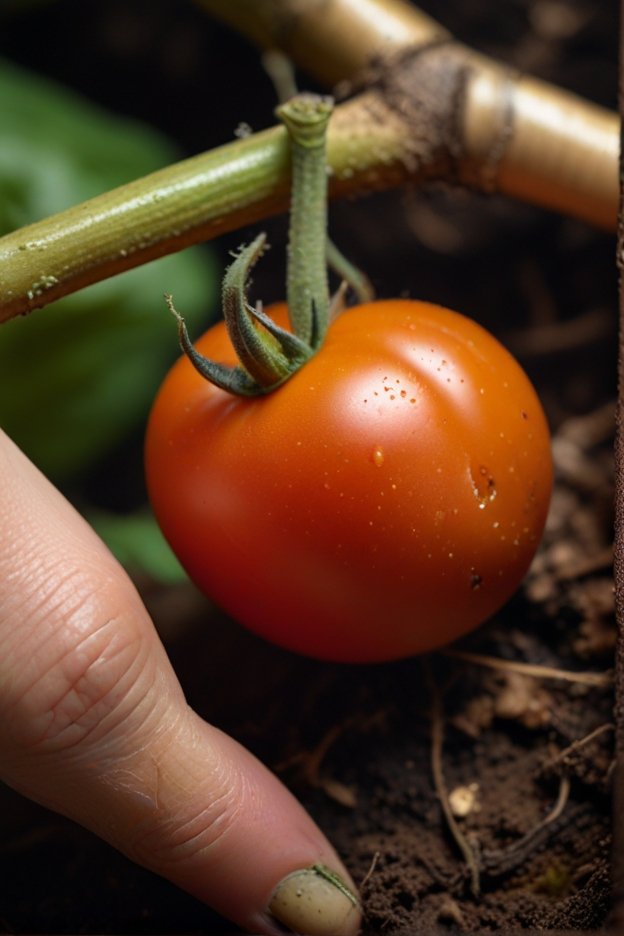
Dealing with Affected Tomatoes
If you do encounter blossom end rot, there are a few things you can do to deal with the affected tomatoes:
Remove affected fruit
As soon as you notice tomatoes exhibiting signs of blossom end rot, promptly remove the affected fruit from the plant.
This helps prevent the spread of the condition to other fruits and allows the plant to redirect its resources towards developing healthy, unaffected fruit.
Use clean pruning shears or scissors to carefully cut off the affected portion of the tomato, ensuring to dispose of the diseased fruit away from the garden to prevent further contamination.
Adjust watering schedule
Review your watering practices and make adjustments to ensure consistent moisture levels in the soil.
While blossom end rot is often associated with fluctuations in soil moisture, it’s crucial to strike a balance and avoid both overwatering and underwatering.
Aim to provide tomatoes with a consistent supply of moisture, ensuring that the soil remains evenly moist but not waterlogged.
Consider calcium supplements
Supplementing the soil with additional calcium can help address deficiencies and provide an extra boost to the plants.
Consider incorporating calcium supplements such as crushed eggshells, gypsum, or calcium carbonate into the soil around the base of the affected plants.
These calcium sources help replenish the nutrient levels in the soil, supporting healthy fruit development and reducing the risk of future occurrences of blossom end rot.
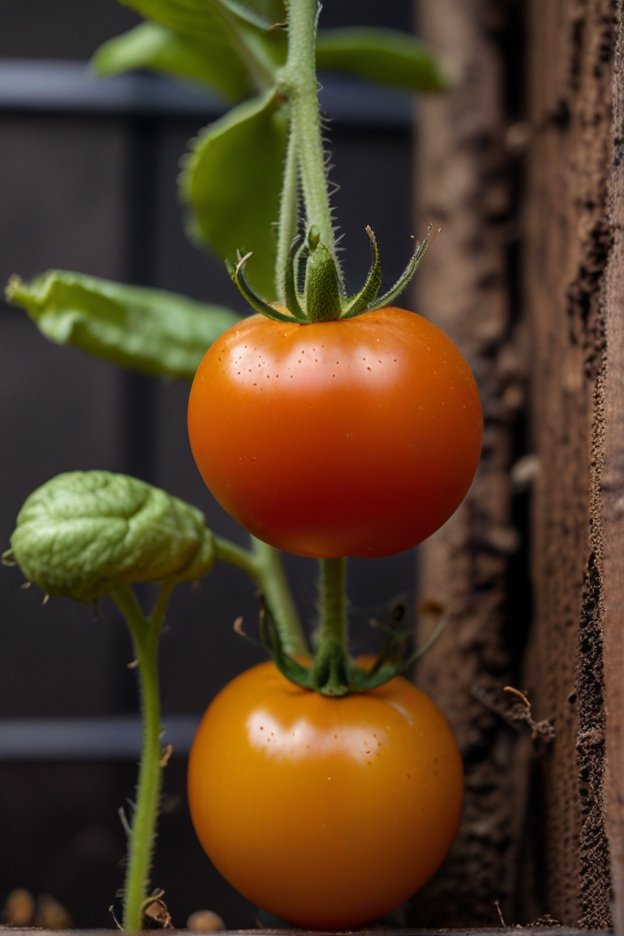
- Read also: DIY Tomato Trellis Ideas: Make Your Garden a Blast from the Past
- Read also: Growing Healthy: A Guide to Natural Pesticides for Tomatoes
Conclusion
Blossom end rot is a common issue that can affect tomato crops, but it’s preventable and treatable.
By understanding the causes of the condition and taking steps to prevent it, you can maintain a healthy and productive tomato crop.
Remember to water consistently, maintain healthy soil, and avoid planting tomatoes too close together. With these tips, you can enjoy a bountiful harvest of delicious and healthy tomatoes.
FAQs
Blossom end rot is caused by a combination of factors, including inconsistent watering, high salt content in soil, and rapid fruit growth.
Prevent blossom end rot by watering consistently, maintaining healthy soil with good drainage and adequate calcium levels, and avoiding planting tomatoes too close together.
If your tomatoes develop blossom end rot, remove the affected fruit to prevent the spread of the condition, adjust your watering schedule, and consider adding calcium supplements to the soil.

